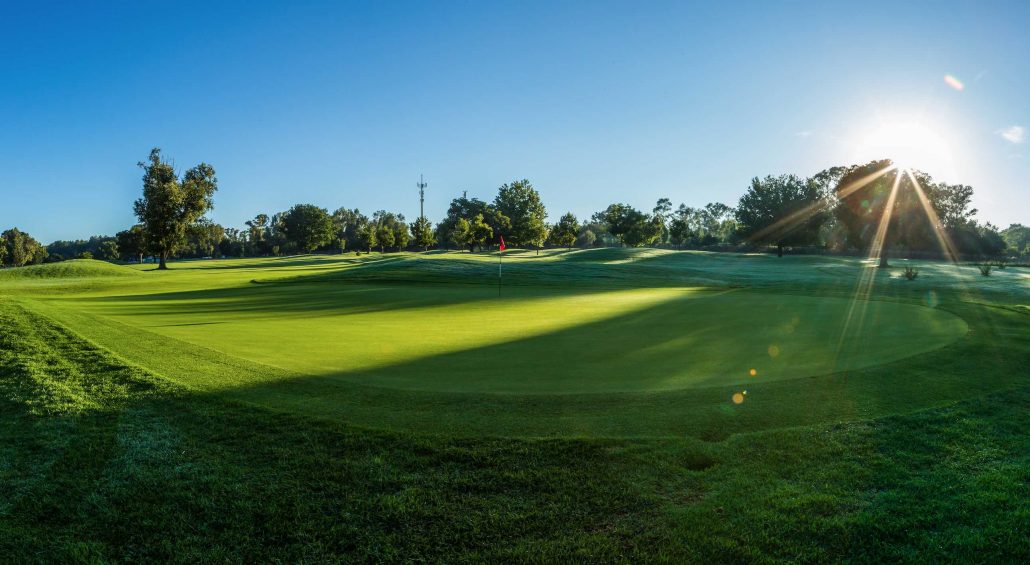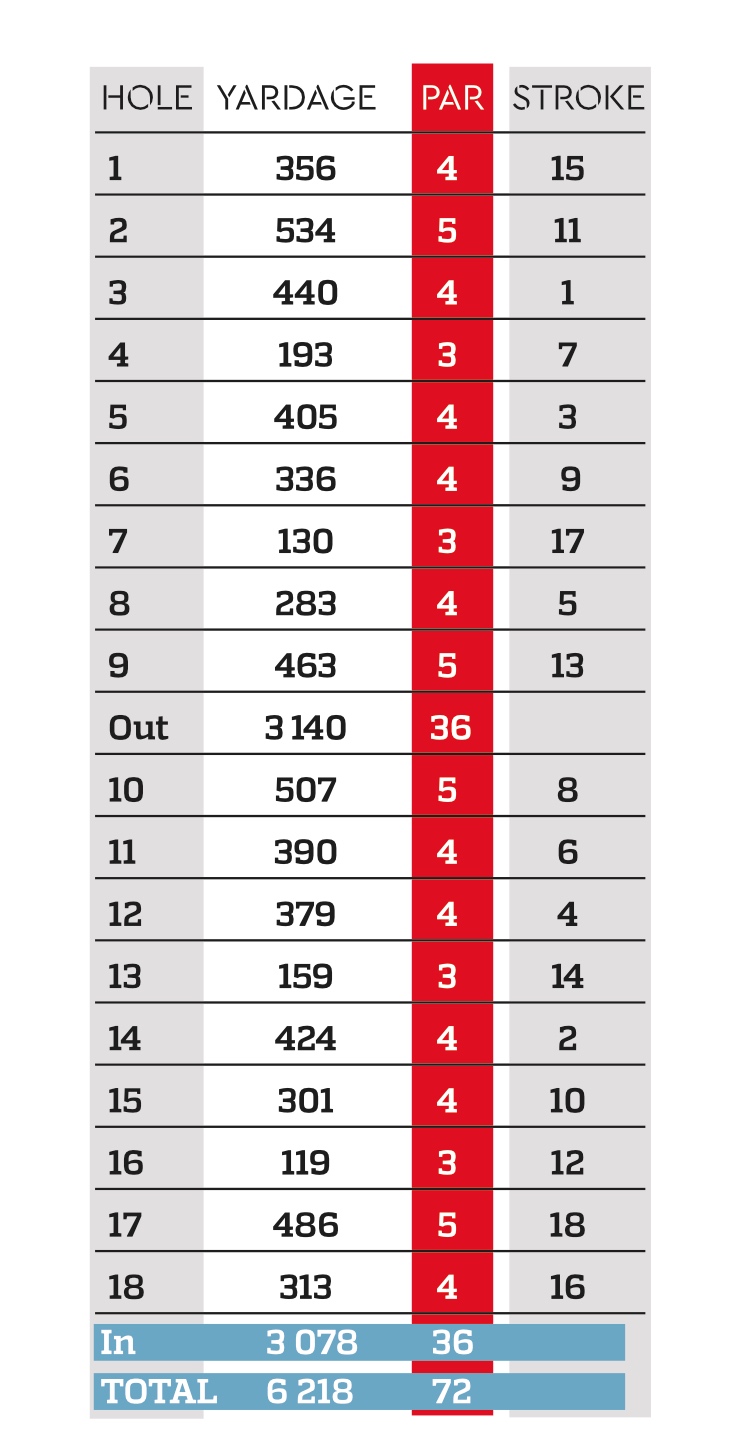The smallest province in South Africa always delivers when it comes to the number and quality of golf experiences. BEN KARPINSKI looks at another Gauteng gem.
Historically, on the back of the mining booms, there was a need for leisure activities and places to unwind for the growing population away from the rigours of work. Golf courses and country clubs were the go-to options, and there was uninterrupted Highveld terrain on which to build them. Then there is, of course, the great year-round weather.
Whichever way you look at it, golf has become many things to many parts of the economic heart of the country, and perhaps none more so than at Irene Country Club, established in 1911 with General Jan Smuts and Sir Percy Fitzpatrick among the original committee. And one that today has retained the best of the old while incorporating the attractions of the new to create a memorable facility.
Measuring 6,216m, Irene is seen as traditional in nature. Distance is a challenge on a few holes, but established tree lines and smaller greens with subtle contours mostly make it a place where accuracy is the name of the game.
You could call the layout a ‘busy’ one, with constant changes in direction of play, smart use of elevation and the Hennops River giving some holes definite characteristics. It is fitting, then, that each hole is given a unique nickname, ranging from the treacherous in ‘Gobbler’ and ‘Gauntlet’, to the more benign ‘High Cloud’ and ‘Oaks.’
The 1st hole, nicknamed ‘The First’, is a gentle opener of which the longer hitters can certainly take advantage with only a large tree on the left to navigate en route to the green. The tee challenges get a little stiffer from there, though, with the par-five 2nd hole bringing the river into play for the first time. Though not a major threat off the tee, the trees down the left and bunkers on the right are, requiring a carry of more than 260m to navigate them safely. From there the narrow nature of the hole continues all the way to a well-protected green; all features that will continue throughout.
Crossing over the river, the 3rd hole deservedly holds the stroke-one index. Called ‘Hollow’, you need to hit a strong drive down the left side to end in a natural hollow, giving you the flattest surface to make your long approach to a uniquely guarded green; one that has another hollow short, a testing bunker to the right, and then out of bounds beyond it. It certainly is a green that players of all levels seek in regulation.
If you like diversity in your short holes, the four par threes at Irene will certainly provide that. The 4th hole, known as ‘Long Short’, is an uphill hole just shy of 200m from the club tee, and often into a little breeze. It is long off the tee and on the green, which means you could be left with a lengthy putt unless you get your club selection right.
The uphill challenge of the 4th is repaid at the enjoyable downhill par-four 5th, before heading uphill again for the 6th. Just over 330m on the card, you may think this hole provides a good scoring opportunity, but a shallow green, measuring just 15 paces from front to back, means your approach has to be precise, especially in the drier, less-receptive winter months.
From gentle undulation, you will encounter an extreme high-to-low as you return to the river with the signature par-three 7th hole. This is an excellent example of the diversity of the short holes, with another shallow and tilting green making par a solid achievement.
Speaking of par threes, the best way to approach the par-four 8th is probably picturing the fairway ahead of you as another green about 170m out from the club tee. With the river looming large down the right, it is aptly named ‘Gobbler’. Even after finding the fairway off the tee, you then have to cross the water to a raised putting area. Take your medicine here and move on swiftly.
The front nine comes to a tough end for the shorter hitter as a series of fairway bunkers make for a tricky tee shot on the par-five 9th. The ‘Gauntlet’, as it is named, is not a huge test for those who can fly the trouble, though, with an accessible green there for the taking in two after finding the fairway.
The back nine takes on more of the Irene charm as you head towards the original farmlands and stone walls that make the area so recognisable. ‘Stone Walls’ is the name of the 10th hole, a tricky par five where you need to play a strong drive up the left side to have any chance of going at the green in two. Even then, the water hazard short of the green will make even the better players think twice about aggressive play here.
The uphill 11th hole can be a bit of a brute if the wind is up, but it leads to the very enjoyable 12th where you can certainly free up the swing with the big stick. Named ‘High Cloud’, you play back in a south-westerly direction which often produces some spectacular cloud formations in the summer months. It is here where you also come into contact with the working dairy farm, which is not your everyday golf setting.
The par-three 13th is a great place to tee up a ball. Looking ahead you have a beautifully framed target up a slight hill dominated by the striking Irene stone walls. Behind you stand grazing dairy cows, oblivious to how your round is going. You may need to take a second to regain your concentration with all this around you.
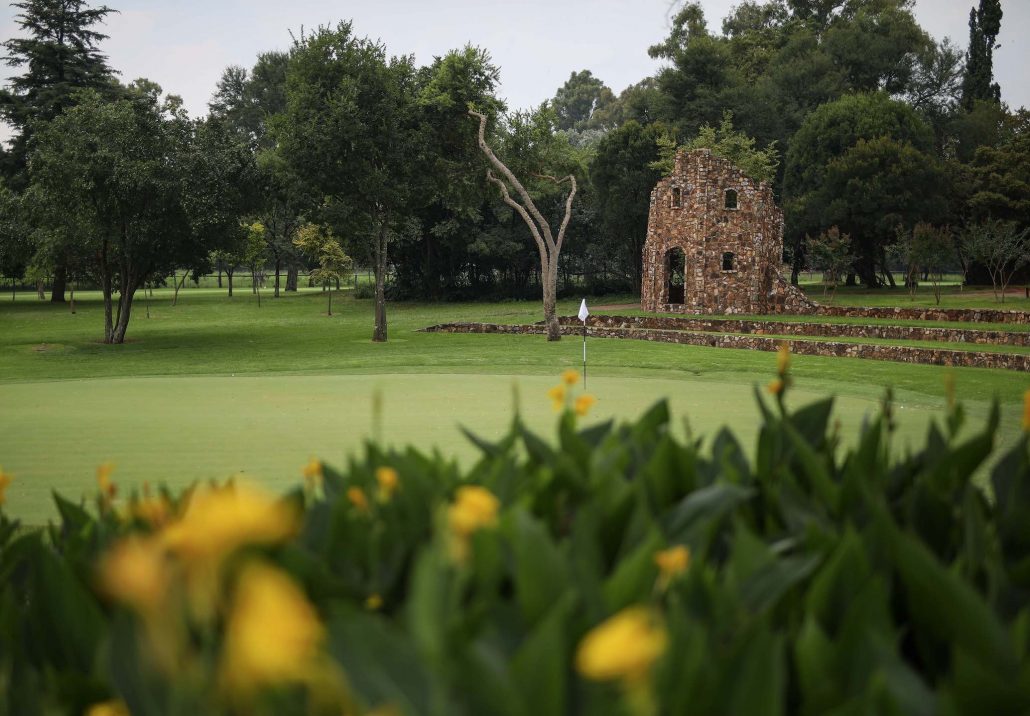
From here you run an interesting set of risk-and-reward holes back to the clubhouse. The 14th is a strong par four playing down towards the river. You want to keep your ball in the right half, and maintain that line with your approach to the green as anything left or long will be met with a splash.
The 15th provides the longer hitters with a potentially driveable par four, but with thick trees down the left, and the raging river down the right, the prudent play with an iron off the tee will go through the mind.
The par-three 16th hole is called ‘Island’, and although it technically has water running down only the right side, it has a raised putting surface that you don’t want to miss. Try to forget about the flag here; middle of the green is the place to be as the further back you go the narrower it gets and also brings a tricky bunker into play on the left side.
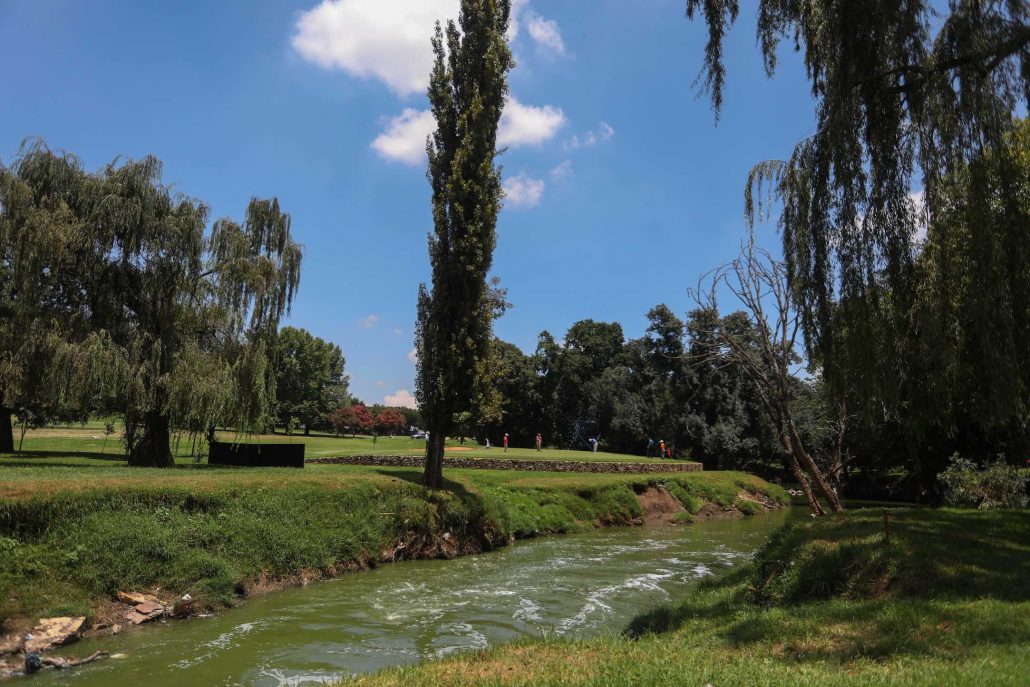
The par-five 17th begins your final stretch home with a bit more space to let something fly off the tee. The longer players will certainly feel they can go at this hole in two, but be sure to stay out of the sand on the left as this bunker is set a good few metres short of the green, turning a relatively straightforward hole into a tough one very quickly.
The 18th is a gentle par four where you just need to keep it up the right side inside the line of pine trees. This will allow you to take on one of the less-guarded greens on the course and finish with a flourish.
SIGNATURE HOLE
7th hole, 130m, par three
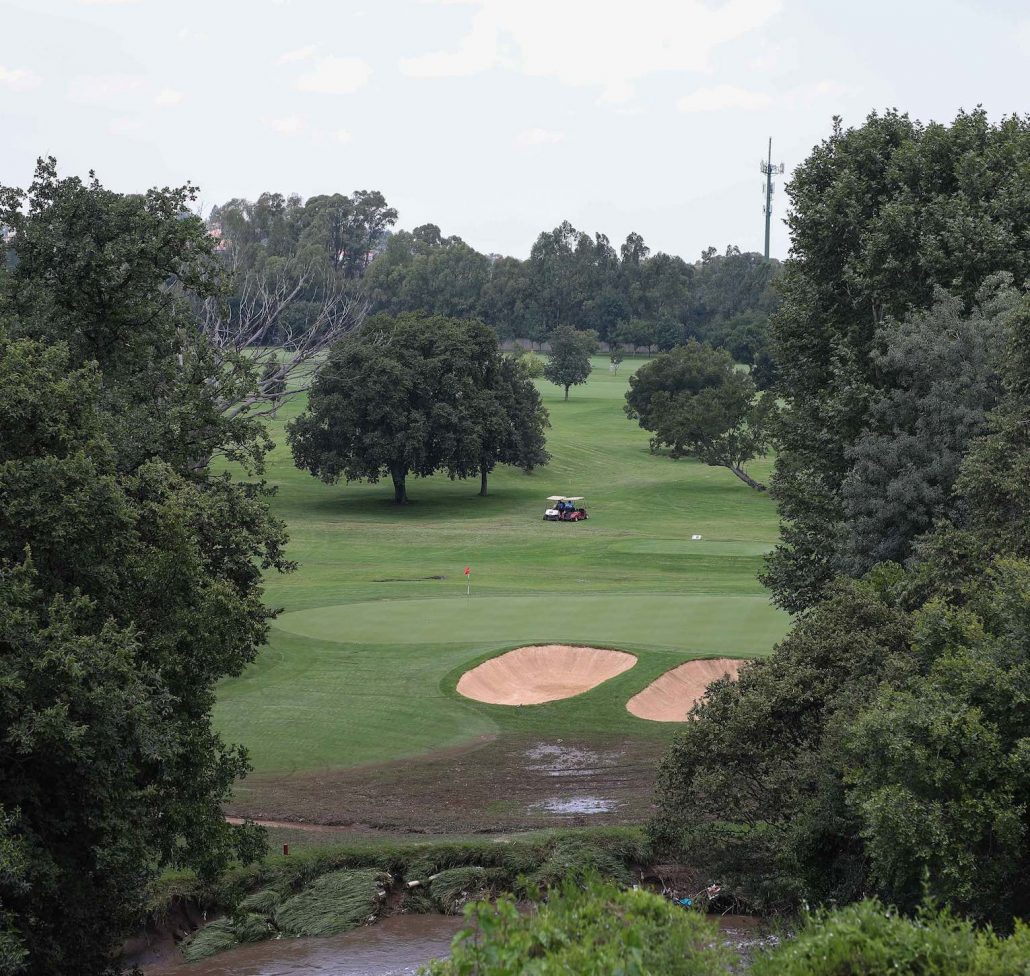
There are a few contenders for the choice of the signature hole. The one that really stands out and can be played in many different ways, depending on the season and weather, is the par-three 7th.
In keeping with the feel of the course and not having to be overly long to provide a decent challenge, Irene pro Mike Usendorff shares his thoughts on how to play this hole.
‘It is nicknamed “Pulpit”, and standing on the tee you certainly feel like you need to deliver something special shot-wise here. Being so high above your target area, many thoughts come into play, from club selection through to visualising the shot you want to play. At just 130m from the club tee, the true distance after factoring in elevation is more around the 110 mark. This of course all depends on your trajectory and shot shape.
‘With the prevailing breeze coming off the right, and you getting a lot more hang time than you usually would over this distance, the ideal shot is to flight something over the bunkers guarding the front right of the putting surface. Those two sand traps are the major obstacles on this hole, but the shallow green is another thing to be mindful of. This makes judging distance essential from the tee, as anything too long in approach will fall away down a slope providing a tricky chip back to a green sloping away from you.
‘With the nitty-gritty covered, one more thing to consider when playing from such an elevated tee is that there is definitely no better short hole at which to get a hole-in-one from a visibility perspective!’
GREENFEES
Full members: 18 holes R230 (Mon-Wed am, Thurs am-Fri am; Sun pm); R250 (Wed pm; Fri pm-Sun am; public holidays); 9 holes R140
Affiliated members: 18 holes R250 (Mon-Tues pm); R370 (Wed am-Fri pm; Sun am); R510 (Sat am-Sun am; public holidays); 9 holes R150
Non-affiliated members: 18 holes R250 (Mon-Tues pm); R510 (Wed am-Fri pm; Sun pm); R710 (Sat am-Sun am; public holidays); 9 holes R175
Golf carts: 18 holes R275 (members); R370 (visitors); 9 holes R160 (members); R220 (visitors)
Please visit irenecc.co.za for student, junior and senior citizens greenfees
ROAD DISTANCES
Pretoria: 22km
Johannesburg: 49km
Mbombela: 328km
Bloemfontein: 450km
Kimberley: 522km
East London: 1,010km
Gqeberha: 1,100km
GETTING THERE
From OR Tambo International:
Take Voortrekker Rd to the R21.
Follow the R21 to the M57 in Tembisa.
Follow the M57 and M18 to Irene Country Club.
GPS CO-ORDINATES
S25°53’6.19” E28°13’25.53”
ADDRESS
1 MI8
Doringkloof
Centurion
0157
CONTACT DETAILS
General: (012) 667 1081
WEB DETAILS
– This article first appeared in the August 2022 issue of Compleat Golfer magazine. Subscribe here!


